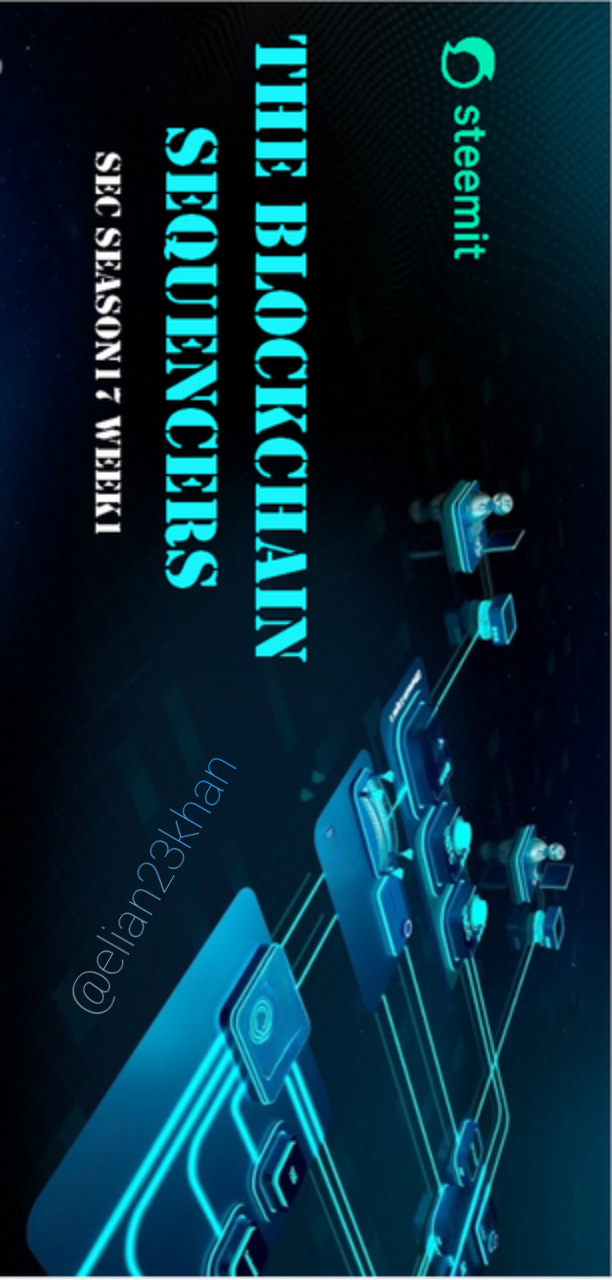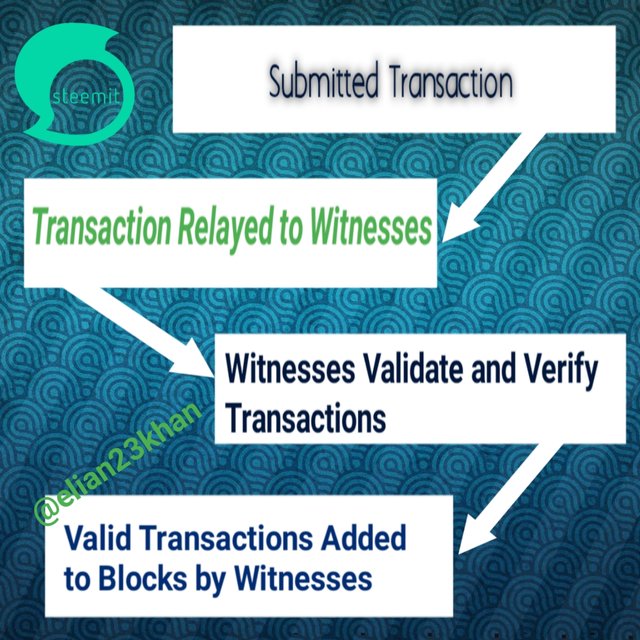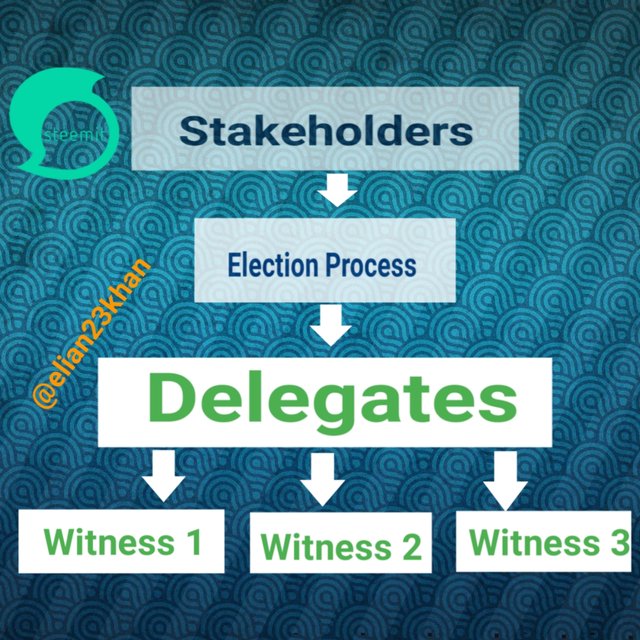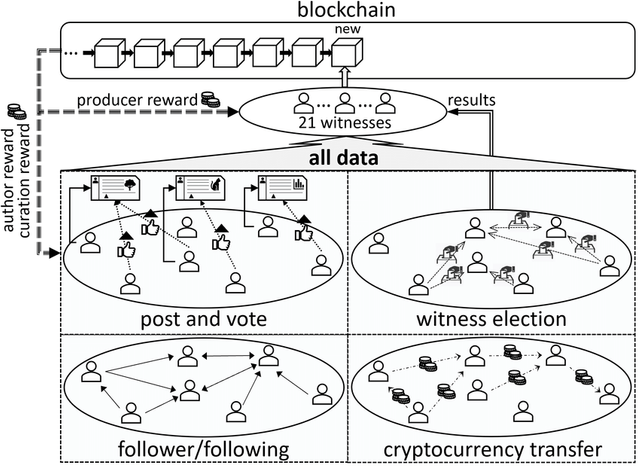 source modified using pixellap.
source modified using pixellap.

Welcome, Steemains, to an exploration of the intricacies of blockchain technology, with a special focus on the Steem blockchain and its sequencers. In this contest, we embark on a journey to unravel the foundational concepts of blockchain, understand the functioning of the Steem blockchain sequencer, examine the importance of decentralization and governance, and illustrate key concepts with practical examples.
Blockchain technology serves as the backbone of decentralized systems like the Steem platform. At its essence, a blockchain is a distributed ledger that records transactions across a network of computers in a secure, transparent, and immutable manner. By leveraging cryptographic techniques and consensus mechanisms, blockchains enable trustless peer-to-peer transactions and eliminate the need for intermediaries.
Now, let's delve deeper into the core concepts of blockchain technology and their relevance to the Steem ecosystem.


To comprehend the functionality of the Steem blockchain sequencer, it's imperative to grasp the fundamental building blocks of blockchain technology. At its core, a blockchain consists of interconnected blocks, each containing a batch of transactions. These blocks are linked together in chronological order, forming a continuous chain of data1.
The process of sequencing transactions involves bundling individual transactions into blocks and adding them to the blockchain in a sequential manner. Each transaction contains essential information such as sender, recipient, amount, and a digital signature to verify its authenticity. Once validated, transactions are grouped into blocks and appended to the blockchain through a consensus mechanism.
For instance, in the Bitcoin blockchain, transactions are sequenced using the Proof of Work (PoW) consensus algorithm, where miners compete to solve complex mathematical puzzles to validate and append blocks to the chain. This process ensures the integrity and security of the blockchain by requiring computational effort to modify historical transactions.


Now, let's shift our focus to the specific process of sequencing transactions on the Steem blockchain. Unlike traditional Proof of Work (PoW) blockchains like Bitcoin, the Steem blockchain employs a unique consensus mechanism known as Delegated Proof of Stake (DPoS). This consensus algorithm relies on elected delegates, known as Witnesses, to validate transactions and produce blocks.
In the Steem ecosystem, the transaction sequencing process begins with users submitting transactions to the network. These transactions include actions such as posting content, transferring tokens, and voting on content. Once submitted, these transactions are relayed to Witnesses, who are responsible for confirming their validity and including them in blocks.
The Steem blockchain sequencer, also known as the block producer, is tasked with assembling valid transactions into blocks and adding them to the blockchain. Witnesses take turns producing blocks in a round-robin fashion, with each Witness producing a block during their designated time slot. This deterministic scheduling ensures that transaction sequencing is fair and efficient, minimizing delays and ensuring timely confirmation of transactions.

Design using pixellap
As illustrated graphically above, let's consider a scenario where @b-naj or @wirngo or @saxopedia submits a post to the Steem platform. Upon submission, this transaction is relayed to Witnesses, who validate the post's content, verify his identity, and ensure that the necessary account balances are sufficient to cover any associated costs, such as posting rewards. Once validated, the transaction is included in a block by the next available Witness, effectively sequencing it into the blockchain.


Consensus algorithms are pivotal in determining how transactions are sequenced and validated within a blockchain network. Various consensus mechanisms exist, each with its unique approach to achieving agreement among network participants.
In the context of the Steem blockchain, the Delegated Proof of Stake (DPoS) consensus algorithm is employed. Unlike PoW, where miners compete to solve cryptographic puzzles, DPoS relies on a selected group of stakeholders, known as Witnesses, to validate transactions and produce blocks. These Witnesses are elected by the Steem community through a voting process based on stake-weighted preferences.
The DPoS mechanism offers several advantages, including increased transaction throughput, reduced energy consumption, and improved scalability compared to PoW-based systems. By delegating block production to a limited number of trusted nodes, DPoS ensures efficient transaction sequencing while maintaining network security and decentralization.

Design using pixellap
The above diagram visually represents the flow of governance and decision-making in the DPoS consensus algorithm, illustrating how stakeholders elect delegates to represent them in the validation and sequencing of transactions on the Steem blockchain.


Nodes play a crucial role in the transaction sequencing process within a blockchain network. Full nodes maintain a complete copy of the blockchain ledger and participate in transaction validation and block propagation. They verify the integrity of incoming transactions and ensure consensus with the network's rules and protocols.
On the other hand, light nodes, also known as SPV (Simplified Payment Verification) nodes, rely on full nodes to access blockchain data and verify transactions. While light nodes offer lower resource requirements and increased accessibility, they sacrifice some degree of security and autonomy compared to full nodes.
In the Steem ecosystem, both full nodes and light nodes contribute to the transaction sequencing process, ensuring the integrity and reliability of the blockchain network. Their combined efforts facilitate efficient transaction validation and block propagation, enabling seamless operation of the Steem platform.


Decentralization and governance are core principles of the Steem blockchain, driving its operation and evolution. Decentralization refers to the distribution of power and authority among network participants, eliminating single points of control and censorship.
Governance, on the other hand, encompasses the processes and mechanisms through which decisions are made and implemented within the Steem ecosystem. It involves stakeholders, including Witnesses, developers, content creators, and users, collaborating to propose, debate, and enact changes to the protocol and platform.
In the context of transaction sequencing, decentralization and governance play a crucial role in ensuring the fairness, transparency, and security of the process. Witnesses, elected by stakeholders, oversee block production and validate transactions according to community-approved rules and protocols.
For example, the recent implementation of the Resource Credit (RC) system on the Steem blockchain required governance decisions to adjust transaction sequencing parameters and allocate network resources effectively. Through community consensus and collaboration, stakeholders can adapt and improve the transaction sequencing process to meet evolving needs and challenges.


In conclusion, understanding the intricacies of blockchain technology, particularly the operation of sequencers on the Steem blockchain, is essential for active participation in the Steemit ecosystem. By grasping the fundamentals of blockchain, exploring the functionality of the Steem sequencer, and recognizing the significance of decentralization and governance, users can contribute meaningfully to the growth and development of the Steem platform. Let's continue to engage, learn, and innovate within the Steemit community.
Thank you for reading, and best of luck to all participants in the SEC S17-W1 competition!
Best regards.

Upvoted. Thank You for sending some of your rewards to @null. It will make Steem stronger.
Downvoting a post can decrease pending rewards and make it less visible. Common reasons:
Submit
I appreciate how you have simplified complex concepts for everyone to understand. Best of luck in the contest
Downvoting a post can decrease pending rewards and make it less visible. Common reasons:
Submit
Thanks for leaving a comment Sir.
It's my pleasure
Downvoting a post can decrease pending rewards and make it less visible. Common reasons:
Submit
Saludos elian23khan, un gusto para mi saludarte y leer tu participación.
Los secuenciadores steem estan representado un un sistema de trabajo delegado, estos recaen en nuestras principales figuras llamados testigos, de ellos depende en buen funcionamiento del ecosistema, de su seguridad y gobernanza.
Te deseo éxitos y bendiciones.
Downvoting a post can decrease pending rewards and make it less visible. Common reasons:
Submit
You have created a great article here.It highlights the essential foundation of blockchain innovation as well as makes clear the distinct agreement device, Delegated Proof of Stake (DPoS), used by Steem. An illuminative instance plainly shows the function of Witnesses in confirming purchases as well as guaranteeing the integrity of the blockchain.
Downvoting a post can decrease pending rewards and make it less visible. Common reasons:
Submit
In my experience, understanding the role of blockchain in systems like Steem is crucial. It's like realizing how the foundation supports the entire building. Once I was explaining blockchain to my friend, and I compared it to a digital ledger that everyone can see and verify. It reminds me of how important transparency is in today's digital age.
As a trader, I think visualizing transactions as blocks being added to a chain makes it easier to understand. It's like putting puzzle pieces together to see the whole picture. Oh yeah, it reminds me of when I used to manage inventory at my uncle's store. Each transaction was like adding a new item to the inventory list, ensuring everything was accounted for and organized properly.
In my opinion, governance is like the rules and regulations that keep a community functioning smoothly. I feel like it's similar to how a family makes decisions together to ensure everyone's needs are met. I remember my grandparents telling me stories about how they would gather around the table to discuss important family matters and make decisions together. It's about collaboration and consensus-building, just like in the Steem ecosystem.
Good luck
Downvoting a post can decrease pending rewards and make it less visible. Common reasons:
Submit
Wow, your article is really awesome. It explains the important building blocks of blockchain technology and breaks down the unique agreement system called Delegated Proof of Stake (DPoS) used by Steem. The example you provided is super helpful in understanding how Witnesses play a key role in verifying transactions and keeping the blockchain secure. Great job.
Downvoting a post can decrease pending rewards and make it less visible. Common reasons:
Submit
Hello friend greetings to you, hope you are doing well and good there.
You said that a blockchain consists of interconnected blocks, each containing a batch of transactions. Yes this is true. These blocks then linked together in chronological order, forming a continuous chain. Hence a Blockchain is made with us.
You have made a beautiful attempt to explain the Steem Blockchain sequencers. The process of sequencing transaction in a Blockchain involve various steps. All steps are easy to understand.
I wish you very best of luck in this contest.
Downvoting a post can decrease pending rewards and make it less visible. Common reasons:
Submit
Anytime I come across such quality content I usually have this cold feeling because it's embed and input so much knowledge that are very well to come by even after going through many articles
Thanks for sharing such quality article, wishing you the best please keep it up. Kindly drop a comment to my post using the link https://steemit.com/hive-108451/@starrchris/sec-s17-w1-or-or-steem-blockchain-sequencers
Downvoting a post can decrease pending rewards and make it less visible. Common reasons:
Submit
Greetings my friend @elian23khan! Your explanation of blockchain sequencing is fantastic! It's like putting together a digital puzzle, with each block representing a piece of the picture. 🧩 Keep up the great work! All the best in the contest, success for you! 👍
Downvoting a post can decrease pending rewards and make it less visible. Common reasons:
Submit